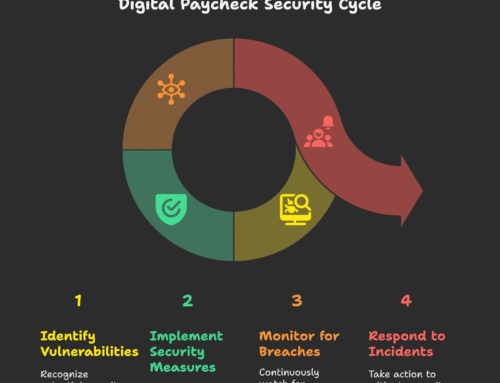A Benefits Administration system is a software solution designed to streamline and manage employee benefits programs. These systems are integral to Human Resources (HR) departments as they handle various tasks associated with full benefit management, such as enrollment, tracking, and compliance. The system simplifies complex processes, ensuring that employees receive their entitled benefits efficiently and accurately. Below, we explore the various aspects of a Benefits Administration system, how it aids HR departments, and the advantages it offers to employees.
Image by nensuria on Freepik
What is a Benefits Administration System?
A Benefits Administration system is a comprehensive tool designed to automate the administration of employee benefits. This system encompasses a wide range of functionalities, ensuring a streamlined and efficient process for managing benefits.
One of the key functionalities is Benefits Enrollment, which allows employees to enroll in various benefits programs electronically. This feature simplifies the enrollment process, making it more accessible and convenient for employees. Benefits Tracking monitors the status and utilization of various benefits, providing both employees and employers with up-to-date information on benefit usage.
Compliance Management is also an essential component of a Benefits Administration system. This functionality ensures that the organization complies with federal, state, and local regulations regarding employee benefits. By maintaining compliance, the organization can avoid legal issues and penalties.
Another important aspect of a Benefits Administration System is that it can handle the Data Management aspect. This involves maintaining and updating employee benefits data, ensuring that all information is accurate and current. This functionality helps in efficient record-keeping and data retrieval. It can also facilitate communication between HR and employees regarding benefits, ensuring that employees are well-informed about their options and any changes to their benefits.
How a Benefits Administration System will Help HR Manage Employee Benefits
HR departments traditionally handle employee benefits through manual processes, which can be time-consuming, error-prone, and difficult to manage, especially in large organizations. These manual processes often involve a significant amount of paperwork and administrative tasks, leading to inefficiencies and potential mistakes. A Benefits Administration system automates many of these processes, offering several key benefits that significantly improve the management of employee benefits.
The first major advantage is the Streamlined Enrollment Process. Employees can enroll in benefits programs online, which reduces the paperwork and administrative burden on HR staff. The system guides employees through the enrollment process step by step, ensuring they make informed decisions about their benefits. This not only simplifies the process for employees but also ensures accuracy and completeness in their selections.
Another benefit is Centralized Data Management. All employee benefits data is stored in a centralized database, making it easier for HR to access and update information. This centralized approach ensures that data is consistent and up-to-date across the organization, reducing the risk of discrepancies and errors. It also allows HR to efficiently manage and retrieve data as needed.
Enhanced Compliance is a crucial feature of Benefits Administration systems. These systems are equipped with tools to help HR ensure compliance with various regulations, such as the Affordable Care Act (ACA) in the United States. The system can automatically generate reports, track deadlines, and alert HR to any compliance issues. This proactive approach helps organizations avoid penalties and legal issues related to non-compliance.
Improved Communication is another significant benefit. These systems often include communication tools that allow HR to send notifications and updates to employees about their benefits. This can include reminders about enrollment periods, changes to benefits programs, or information about new benefits offerings. Effective communication ensures that employees are well-informed and can take full advantage of their benefits.
Analytics and Reporting capabilities provide HR with valuable insights into benefits utilization, costs, and trends. HR can generate detailed reports and analytics, which help in making informed decisions about benefits offerings. This data-driven approach aids in budget planning and ensures that the benefits programs are aligned with the needs of the employees and the organization.
Advantages for Employees
For employees, a Benefits Administration system also offers several significant advantages.
One key advantages is Self-Service Capabilities. Employees can access the system at any time to view their benefits information, enroll in programs, and make changes during open enrollment periods. This self-service model provides greater flexibility and convenience for employees, allowing them to manage their benefits at their own pace.
Another advantage is Transparency. Employees have full visibility into their benefits options, costs, and the status of their enrollments. This transparency helps employees understand their benefits better and make more informed choices, leading to greater satisfaction and utilization of available benefits.
Timely Access to Information is also a significant benefit. With automated alerts and notifications, employees receive timely updates about important deadlines, such as open enrollment periods or changes to their benefits. This ensures that employees do not miss critical information and can take necessary actions promptly.
Additionally, Education and Resources provided by many Benefits Administration systems are invaluable. These systems often include educational resources, such as FAQs, benefits calculators, and tutorials. These resources help employees understand their options and the implications of their choices, empowering them to make better decisions about their benefits. Also, these systems offer Employees access to enhanced support features, such as chatbots or help desks, providing quick answers to their benefits-related questions. This immediate support improves the overall employee experience, ensuring that employees feel supported and informed.
Improved Accuracy is another crucial advantage of using a Benefits Administration system. Automation reduces the risk of errors in benefits administration, ensuring that enrollments and changes are processed accurately and promptly. Employees can trust that their benefits information is correct and up-to-date.
A Benefits Administration system is a vital tool for both HR departments and employees that enhances the efficiency and effectiveness of benefits management, leading to a more satisfied and engaged workforce at all levels of the organization.







Leave A Comment